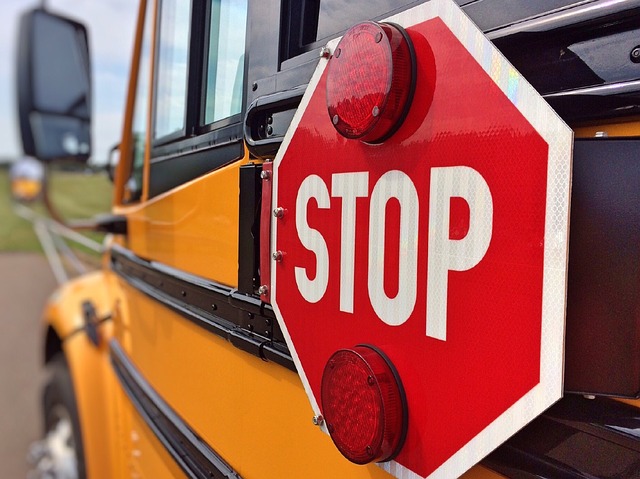Fall 2020 KIDS Data Collection Update
ISBE’s Fall 2020 Learning Recommendations emphasize the importance of developmentally appropriate assessments to understand where students are in their learning when school begins. The 14 required measures of the Kindergarten Individual Development Survey (KIDS) conveys a group-level proxy of readiness, which provides district- and state-level indications of strengths and areas for growth upon kindergarten entry. The full KIDS tool can provide a developmentally appropriate, observation-based assessment of individual student development.
How Teacher Reciprocity Can Help Schools Reopen
Teachers, doctors, and lawyers share one thing in common: When they move from state to state, their licenses may not follow. While licenses exist to protect public safety, they also have the effect of creating higher barriers to entering professions or moving to another state. Only eight states offer full teacher license reciprocity, which means that teachers certified in one state can be considered fully licensed in another. Most states require additional coursework, assessments, or experience in order to become certified to teach within their state.
Assessments Will Likely Show COVID-19-Related Learning Loss: Then What?
Over the last several months, researchers and organizations have tried to quantify the potential learning loss as a result of the closures related to COVID-19. Some suggest students may be 30 percent-50 percent behind where they would have been, had schools remained open as usual. More than 75 percent of school principals expect student achievement to be lower than it was in fall 2019. Indeed, RAND Corp’s educator survey showed nearly half of teachers focused their distance learning time primarily on reviewing prior content. Only 12 percent reported covering all or nearly all the curriculum they would have had school buildings not closed.
Why Is There No Consensus About Reopening Schools?
Is it possible to reopen school buildings in the fall in a way that keeps kids, educators, staff, and their families and communities safe from COVID-19? Is it possible not to do so without harming them in other ways? Already, school closures have set children behind academically. More than 20 million children rely on school breakfasts and lunches. Too many parents face the choice between losing their jobs or leaving their children at home unsupervised. Vaccination rates for various dangerous diseases, typically required before students can attend school, have plummeted. Isolating children from their peers exacts social and emotional costs, which differ by age group and are nearly impossible to quantify.
Why the move to online instruction won’t reduce college costs
As COVID-19 swept across the country in March, colleges shuttered and millions of students and instructors were propelled into a world of distance education. Institutional leaders are now grappling with how to provide a quality education over the academic year ahead while also guarding the health and safety of students, faculty, and staff. Online instruction is a core component of many colleges’ strategies, with a growing number abandoning in-person plans for the fall. Questions about the feasibility, quality, equity, and costs of online instruction sit front and center. Our recent analysis suggests that the difficulty of shifting instruction online is likely to vary across fields of study, and that movement to online education is unlikely to reduce instructional costs.
COVID-19 Has Left Thousands of After-School Programs in Jeopardy
Thousands of after-school programs closed their doors months ago—and a majority now fear they may never reopen. Nearly 9 in 10 programs have long-term funding concerns because of school closures caused by COVID-19—and 6 in 10 are concerned that they may have to permanently shut their doors, a survey commissioned by the Afterschool Alliance, a Washington, D.C.-based advocacy organization, reveals. Despite the bleak outlook, the survey of 914 after-school providers may not capture the full extent of the trouble programs face. Survey respondents were contacted in May and June, before a wave of school districts, including nine of the nation’s 15 largest, announced this month that they plan to begin the fall semester online.
Less time on schoolwork, more paper packets in high-poverty districts, national survey finds
Once the pandemic upended normal school this spring, students of all ages in high-poverty school districts were asked to do less schoolwork and spend less time in class than their peers in affluent school districts. That’s according to a national survey led by the American Institutes for Research, one of the most sweeping efforts to date to track what student learning looked like during that period. It includes responses from a nationally representative group of 474 school districts across the country, collected from mid-May to mid-July. The survey also found high-poverty districts were less likely to monitor if students completed their work, if students were interacting with their teachers, and if students were logging into their school district’s online programs. Some 15 percent of high-poverty districts said they didn’t monitor student participation at all, while only 1 percent of low-poverty districts said the same.
Students Weigh In: Learning & Well-Being During COVID-19
Education in the United States, as across the globe, changed dramatically when schools across the country closed in spring 2020 and students were asked to learn remotely. There is a critical opportunity now to listen to and learn from students’ lived experiences during this unprecedented time. As we navigate the challenges ahead, students’ voices must be central to the way school is reimagined. This report shares data and insights gathered from the Students Weigh In: Learning & Well-Being During COVID-19 survey. This 12-minute online survey, fielded from May 11 and June 19 in English and Spanish, asked fifth-12th grade students age-appropriate questions about their school experience, social and emotional development, and well-being during the unprecedented spring 2020 school closures.

